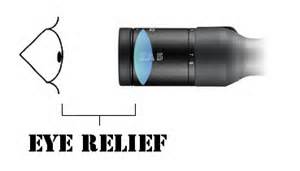 This article is not about the product Visine, although I may need some by the time that I finish this article.
This article is not about the product Visine, although I may need some by the time that I finish this article.
Note that this article is about scopes; rifle, handgun, or shotgun – no matter. The right scope, with the correct eye relief, not only can keep you safe but increase accuracy on whatever it is mounted. Dot sights and Holographic sights do not suffer from eye relief and this is the only mention that they receive in the article.
The impetus for my writing this article stems from a recent experience in mounting a scope on the Ruger 77/357; a carbine bolt-action rifle chambered for the .357 magnum round. There is nothing special about the rifle and; therefore, I expected nothing special about a scope that it was to be adorned. I was wrong about that.
The Ruger 77/357 comes with a 13.5-inch length of pull (LOP) and the synthetic stock is like many found on other rifles. There is nothing special about the stock, but the lengths that I went through to fit the right scope to the rifle was more than I bargained for.
I was using the scope mounting rings that Ruger provided with the rifle. They are about medium in height and a scope with an objective lens housing of 40mm to 44mm would be ideal. I did not feel that I needed a lot of magnification for a rifle that shoots a pistol cartridge and decided that the Bushnell Banner Dusk til’ Dawn 2-7x 32 shotgun scope would be ideal for the rifle and me.
My first trip to the range with this combination proved to be a disaster. I could not get far enough up on the rifle to obtain a proper scope picture and the target results only added to my frustration. I was not only fighting the eye relief of the scope but a hard trigger pull; both of which I could fix.
I opted to try a different scope of a different magnification level, which normally means that the eye relief would be greater. I mounted a Cross Point Adventure Class 3-9×40 scopes and everything seemed fine – at home. Again, at the range, the eye relief was slightly better than the previous scope. Although I did shoot better, the scope was obviously not for me.
I found a Bushnell Banner 3-9×40 scope with a 6-inch eye relief and decided to give it a try. The results were spectacular at the ocular lens. I simply laid my head on the stock, opened my sighting eye and a perfect scope picture was evident. My problem was solved with this scope. A subsequent trigger was performed on the rifle by my favorite and highly competent gun smith and the rifle is now ready for whatever comes in front of it.
I have 3-9×40 scopes on most of my high-powered rifles so I am no stranger to the scope. Like LOP; however, I am learning how little things can affect how you operate a long gun. With that in mind, let me pass on some information about scopes and eye relief.
Eye relief for an optical device is simply the distance from the ocular lens of the optical device to your eye. While eye relief is not a big thing with binoculars, it is with scopes due to the recoil characteristics of most firearms. A large caliber firearm will generate more recoil. Greater recoil means that the scope on a rifle (or shotgun), the greater the distance that the scope moves rearward with the rifle under recoil. If the eye relief of the scope is too short, you may be gifted with the ‘scope eye’ award when the rim of the ocular lens housing makes contact somewhere around the eyebrow of your sighting eye. If you wear prescription glasses, the eye relief of a scope becomes problematic as you try to balance the eye relief of the scope against your distance to the scope. The secret is ‘move the scope to the eye and not the eye to the scope.’ There is; however, one exception to this general rule that I will bring out later in this article.If your eye is too far from the scope, the ocular lens will look fuzzy and the scope picture will be reduced. This is true of any scope – even intermediate and long eye relief scopes (I’ll touch on them shortly).
Most scopes are manufactured with a 3-inch to 4-inch eye relief. Long eye relief (LER) scopes, like those found on ‘Scout’ rifles are considered long eye relief scopes; whereas, the eye relief can be anywhere from 8-inches to 10-inches (sometimes greater). The Bushnell Banner 3-9×40 scope with a 6-inch eye relief would be considered a intermediate eye relief (IER) scope and these types of scopes are usually found on higher end scopes.I recently mounted a Center Point 4-16×40 scope on a Ruger American in .223 caliber and the eye relief and scope height was near perfect. Go figure!
Personally, I do not like scopes. Many hunting rifles make their use necessary. They do add weight to the firearm, which in some cases is not a bad thing. With eye not as sharp or as light-gathering as they used to be, I have finally succumbed to ‘scoping’ whenever possible and using dot-sights more often than not on long guns. I do have long eye relief (LER) scopes on several rifles and pistols. These are low magnification scopes that I use with both eyes open. However, I still rely on open sights for my EDC and other handguns for short to medium distances.
For rifles and shotguns where a scope is mounted above the receiver, a standard or intermediate eye relief scope may work well for you. A rifle or shotgun upon which is mounted a scope forward of the receiver, a long eye relief (LER) scope would be the choice to use.
A long eye relief scope spares the shooter the risk of injury, and also can make it easier for the shooter to locate the target. While scopes with a short eye relief require careful positioning of the shooter’s head, scopes longer eye relief offer a range of positions. The shooter only has to get his eye into a range of distances, far enough from the scope to be safe and close enough to be within the eye relief distance.To adjust the scope for the correct eye relief, place the scope inside the rings, as it will sit on top of the gun, but do not tighten the rings. Move the scope in or away from your face to estimate where the correct placement will be to give you the correct eye relief. Adjust the scope to provide the best ‘medium’ distance from standing, sitting (bench position), and prone positions. Normally, your face will be closest to the scope while prone and further rearward when standing. Note that the scope need not be level to do this; you are simply trying to find the best relationship between the scope and your eye.
Lightly snug one scope ring screw to hold the scope in position while you transfer the rifle to the sighting vice. Then, mark the correct position on the rings with washable highlighter ink. Loosen the screw that was holding the scope and once you have ‘level-level-leveled’ the rifle and scope, start the scope ring tightening process. You may wish to double-check the scope position while doing so to ensure the scope position remains at the mark you added earlier. Finish tightening the scope rings to the correct torque and your scope should be ready for bore sighting.
Earlier in the article, I mentioned one exception to the rule, ‘Move the scope to the eye and not the eye to the scope.’ This exception would be for rifles that have adjustable stocks; for example, the AR-based MSR and some shotguns intended for tactical use. The operator of the adjustable-stocked firearm can adjust the stock in or out to obtain the correct scope picture and eye relief regardless of whether the scope is mounted rearward, over the receiver, or forward of the receiver in a ‘scout’ configuration. I found that I needed to move the stock in one notch to correctly position my eye to the 3-9×32 tactical scope mounted on QD mounts.If you want (or need) to mount a scope on a long gun (carbine, rifle, or shotgun) or even a handgun, magnification power is not all that you should be thinking about. A scope that is incorrectly fitted to your eye cancels the magnification power of any scope. Determining the eye relief is as important as the mounting, alignment, and magnification power.
A key point to remember is that the eye relief is the ‘maximum’ distance from the ocular lens to your eye to obtain the proper scope picture; you can be closer than the maximum distance.
Another point to consider is the use of a recoil pad. I use a recoil pad on high-recoil long guns (normally to obtain the LOP that I need). A recoil pad normally adds 1″ to the LOP. Sometimes I use a recoil-shield in lieu of a recoil pad. If you use any of these devices while shooting, adjust the scope with these devices attached. Even if you do not use these devices, your eye will be within the eye relief maximum distance. Just be aware that, in most cases, you will need about 3 inches from scope to eye. For most rifles and shotguns, this distance will be adequate; and you will not be crowding the scope and becoming the possible bearer of the ‘scope eye’ award.
The following provides a couple of videos on the subject of scopes:
![]()


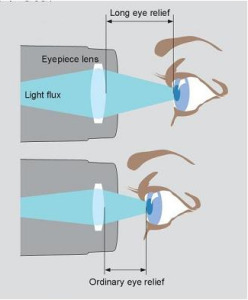

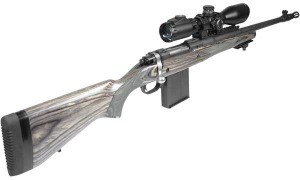
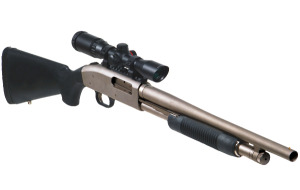
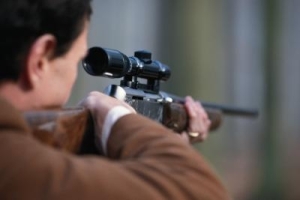
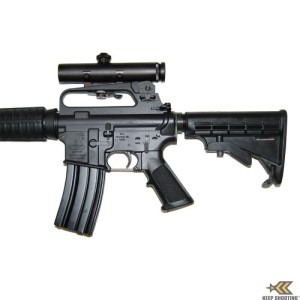
Pingback: How to Choose a Best Spotting Scope – Timerlandoutdoor.com